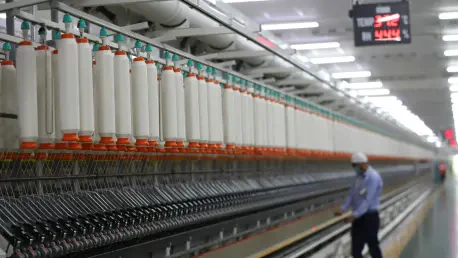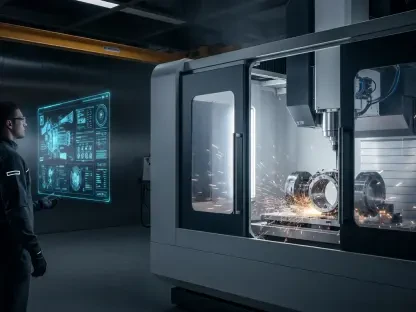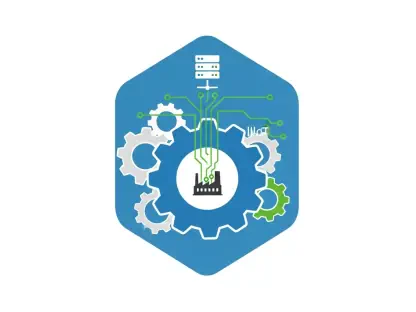India finds itself at a defining moment in its quest to become a powerhouse in defense manufacturing, where the adoption of automation could be the decisive factor in achieving global prominence, especially with escalating geopolitical tensions and a burgeoning demand for military exports. The nation faces immense pressure to deliver cutting-edge systems with speed and precision. The stakes are high, as any shortfall in quality or timelines could undermine national security and international trust. Advanced materials, particularly fiber-reinforced polymer (FRP) components, are central to modern military platforms like drones and protective armor, yet their production complexities expose the limitations of traditional methods. Automation stands out as a transformative force, promising not only operational efficiency but also the reliability needed to meet stringent defense standards. This technological shift is no longer optional but a strategic imperative, setting the stage for a deeper exploration of how it can reshape India’s defense landscape and secure its position as a credible global player.
Transforming Defense Production Dynamics
Navigating Rapid Procurement Demands
The defense sector in India is undergoing a profound shift, driven by the normalization of emergency procurement to address urgent battlefield needs. Recent data reveals that acquisitions worth ₹1,982 crore were swiftly cleared in early 2025 for critical systems such as drones and Very Short-Range Air Defense Systems (VSHORADS). This accelerated pace reflects a high-stakes environment where manufacturers must deliver at unprecedented speeds to ensure operational readiness. Traditional production methods, often slow and prone to inconsistencies, struggle to match these compressed timelines. The reliance on manual processes risks delays that could compromise mission-critical outcomes, highlighting a pressing need for technological intervention. Automation emerges as the linchpin in this scenario, enabling real-time monitoring and robotic precision to streamline workflows. By reducing human error and enhancing scalability, it offers a pathway to meet the relentless demands of modern procurement without sacrificing quality.
Beyond the immediacy of procurement, the evolving landscape places immense pressure on supply chains to adapt to a response-driven model. Emergency sourcing, once an exception, has become routine, pushing manufacturers to maintain constant readiness for rapid production spikes. This dynamic is compounded by the complexity of modern defense systems, which require intricate components produced under tight deadlines. The integration of automated systems can significantly mitigate these challenges by ensuring consistency across batches and enabling quick shifts between production lines. Such capabilities are vital for maintaining a steady supply of essential equipment, especially during unforeseen crises. Moreover, automation provides traceability, a crucial factor in defense manufacturing where every component must meet rigorous standards. As India navigates this high-velocity environment, embracing advanced technologies becomes essential to avoid bottlenecks and sustain its defense preparedness on both domestic and international fronts.
Rising Role of Private Sector and MSMEs
Historically confined to secondary roles, private vendors and Micro, Small, and Medium Enterprises (MSMEs) are now pivotal in India’s defense production ecosystem. Government policies promoting multi-vendor participation and shortened trial cycles have empowered these entities to take on frontline responsibilities, delivering battlefield-grade solutions under intense time constraints. This shift marks a significant departure from past practices, as smaller players must now meet the same exacting standards as larger defense contractors. The challenge lies in scaling operations while maintaining precision, a feat that manual processes often cannot achieve. Automated systems offer a viable solution, equipping MSMEs with the tools to handle complex tasks such as component assembly with robotic accuracy. This not only boosts their capacity but also aligns them with the sector’s evolving needs, ensuring they contribute effectively to national security objectives.
The transformation of private sector involvement is further supported by a collaborative framework that encourages innovation and resource sharing. MSMEs, often constrained by limited capital and expertise, benefit from automation technologies that reduce operational costs and enhance output quality. These advancements allow smaller firms to compete in a market traditionally dominated by established players, fostering a more inclusive defense manufacturing base. Additionally, the integration of digital workflows enables real-time quality assurance, minimizing rejection rates and rework expenses. As these enterprises adapt to their expanded roles, their ability to deliver reliable, high-specification products becomes a cornerstone of India’s self-reliance goals. The synergy between policy support and technological upgrades positions private vendors as critical allies in building a resilient defense supply chain, capable of withstanding both domestic and global pressures.
Strengthening Strategic and Material Capabilities
Geopolitical Implications of Export Growth
India’s defense exports have surged to an impressive ₹23,622 crore in FY 2024-25, reflecting growing international confidence in its manufacturing prowess. This achievement, while a testament to the nation’s potential, brings with it the burden of maintaining reliability to uphold global partnerships. Any lapse in quality or delivery timelines could erode trust, impacting not just economic gains but also geopolitical credibility. Automation plays a strategic role here, ensuring that production processes meet the stringent demands of international buyers. By slashing rejection rates to below 1% through precise control over manufacturing variables, automated systems help sustain the consistency required for export contracts. This technological edge is crucial for India to position itself as a dependable supplier of defense solutions, reinforcing its standing in a competitive global market where reliability is as critical as capability.
The geopolitical stakes tied to defense manufacturing extend beyond mere trade figures, influencing India’s role in regional and global security frameworks. As export commitments grow, the ability to deliver on time becomes a measure of national strength, directly linked to strategic alliances. Automated production lines offer the scalability needed to handle large orders without compromising on quality, ensuring that India can meet both internal defense needs and external obligations. This reliability enhances the nation’s reputation as a trusted partner in defense collaborations, opening doors to further opportunities. Moreover, the integration of advanced systems signals a commitment to modernization, aligning with global trends toward digitized manufacturing. As India leverages automation to strengthen its export profile, it simultaneously fortifies its geopolitical influence, proving that industrial capability is a vital component of national security in an interconnected world.
Precision Challenges with FRP Components
Advanced materials like fiber-reinforced polymer (FRP) are at the heart of next-generation military platforms, valued for their lightweight, durable, and stable properties in applications ranging from unmanned aerial vehicles to radar covers. However, producing FRP components is fraught with challenges due to their sensitivity to process conditions such as resin infusion and curing cycles. Even slight deviations in temperature or timing can result in defects, leading to operational failures and costly rework. Manual methods, despite the skill of the workforce, often fall short in delivering the consistency required for defense-grade materials. This gap underscores the urgent need for automated systems that can monitor and adjust parameters in real time, ensuring precision at every stage. By addressing these production hurdles, automation not only enhances material quality but also safeguards the reliability of critical defense systems.
Scaling FRP production to meet rising demand presents another layer of complexity, as traditional approaches struggle with both speed and uniformity. The high-stakes nature of defense applications means that every component must adhere to exacting standards, leaving no room for error. Automated workflows, equipped with robotic trimming and integrated quality checks, offer a robust solution by minimizing human intervention and ensuring part-to-part consistency. These systems also enable faster production cycles, allowing manufacturers to respond swiftly to urgent requirements without sacrificing quality. The traceability provided by automation further strengthens accountability, a key factor in meeting defense quality assurance protocols. As India pushes to expand its use of advanced materials in military platforms, adopting such technologies becomes indispensable to overcome scalability issues and maintain a competitive edge in the global defense arena.
Fostering a Future-Ready Defense Ecosystem
Driving Innovation through Policy Frameworks
Government initiatives like the Innovations for Defense Excellence (iDEX) framework and the DRDO Technology Development Fund (TDF) are playing a pivotal role in modernizing India’s defense manufacturing landscape. These programs encourage innovation in dual-use materials and composite production, fostering a collaborative environment where public and private sectors work hand in hand. By providing funding and technical support, they enable smaller firms and startups to experiment with cutting-edge technologies, including automation, that might otherwise be out of reach. This policy-driven push is crucial for integrating advanced systems into mainstream production, ensuring that India keeps pace with global advancements. The emphasis on partnerships also helps distribute expertise across the industry, creating a more resilient manufacturing base capable of tackling complex challenges in defense production.
The impact of these initiatives extends to accelerating the adoption of automation as a core component of defense manufacturing strategies. By incentivizing research and development, policies like iDEX and TDF help bridge the gap between conceptual innovation and practical implementation, particularly in areas like FRP production. This support is vital for scaling pilot projects into full-fledged production lines, equipped with automated workflows that enhance efficiency and quality. Furthermore, the collaborative model fosters knowledge exchange, allowing industry players to learn from successful case studies and adapt best practices. As a result, the defense sector benefits from a steady influx of technological upgrades, strengthening its ability to meet both current and future demands. Such policy frameworks lay the groundwork for a self-reliant ecosystem, positioning India to lead in defense innovation on the global stage.
Equipping the Workforce for Digital Transformation
Addressing the skill gap in composite automation and digital factory operations has emerged as a critical focus for sustaining India’s defense manufacturing ambitions. Sector Skill Councils and technology institutes have stepped up efforts to train workers in advanced systems, ensuring that the talent pool can support the transition to automated environments. This development is essential, as the effectiveness of cutting-edge technologies hinges on the ability of personnel to operate and maintain them. Specialized programs targeting digital workflows and robotic systems are helping build a workforce adept at navigating modern production challenges. By prioritizing skill enhancement, India aims to create a seamless integration of human expertise with technological advancements, fostering a robust foundation for long-term growth in the defense sector.
The emphasis on workforce readiness also tackles the broader challenge of adapting to rapidly evolving industry standards. As automation becomes more prevalent, the demand for skilled technicians who can manage real-time data systems and quality assurance protocols continues to rise. Training initiatives are tailored to equip individuals with hands-on experience in digital tools, preparing them for roles that require both technical proficiency and problem-solving skills. This proactive approach not only enhances operational efficiency but also reduces dependency on external expertise, aligning with national goals of self-sufficiency. Moreover, a skilled workforce contributes to innovation by providing insights into practical applications of automated systems. Reflecting on past efforts, the commitment to education and training has proven instrumental in laying the groundwork for a future where India’s defense manufacturing can thrive through a synergy of talent and technology.









